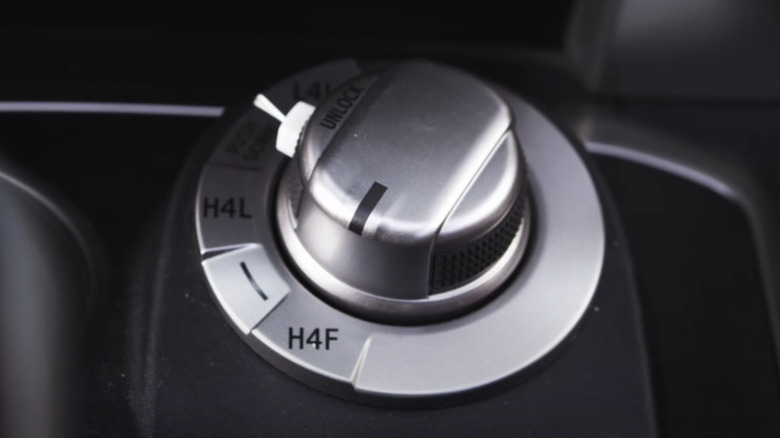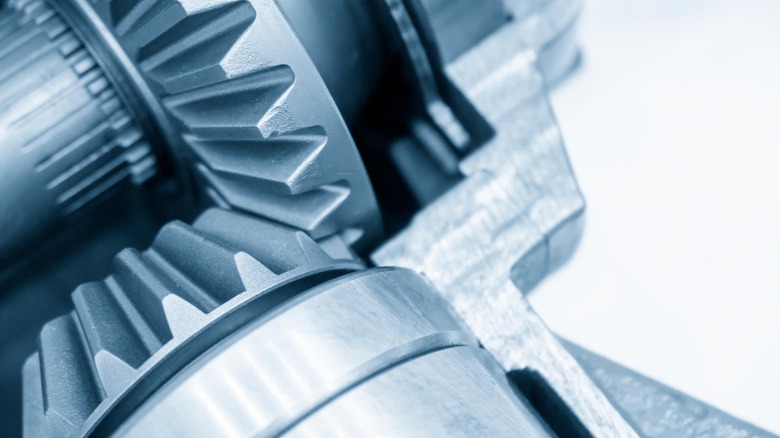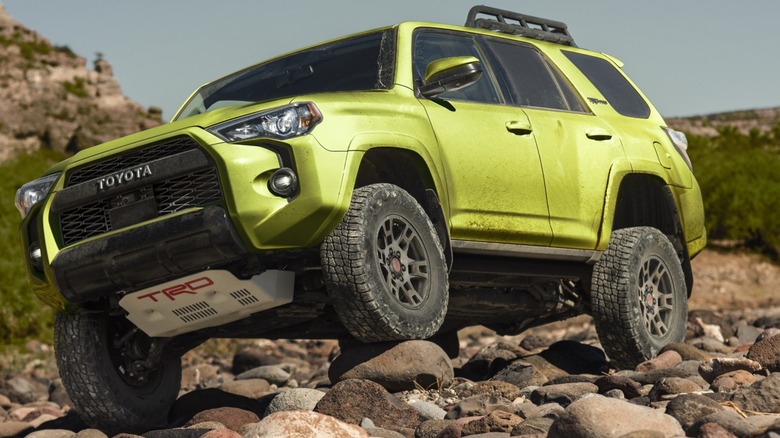What Does H4F Stand For On A Toyota 4Runner? (And How It's Different From H4L)
While the Toyota 4Runner has changed over the years, it remains one of the best new off-road vehicles on the market. In addition to legendary Toyota quality, one of the things that makes it a great off-road SUV is its available full-time four-wheel drive system. The 2025 Toyota 4Runner provides the full-time four-wheel drive option in its Limited and Platinum grades.
The full-time four-wheel drive system used in various versions of the 4Runner over the years features a center differential that can operate either locked or unlocked. The electronically locking center differential provides a driver-selectable choice of two gear ranges: a low gear range for low speed and a high range for driving at normal speeds. While the low range is only available with the center differential locked, the high range can be used with it locked or unlocked.
When available, these options are accessed by the 4Runner's four-wheel drive selector knob that's located near the center-console mounted gear shifter and designated as H4F, H4L, and L4L. When driving on dry paved roads, the 4Runner's full-time four-wheel drive selector knob should be turned to H4F (high range, four-wheel free) or unlocked center differential. If driving conditions are slippery due to snow or ice, or if you venture off-road onto sand or gravel surfaces that limit traction, switch to H4L (high range, four-wheel locked) to lock in the center differential and maximize the available traction.
What does a locking differential do?
Cars and trucks use a differential to allow the tires to rotate at different speeds. This is especially important as the vehicle executes a turn since the tires on the inner arc (left side in a left turn and vice versa) travel a shorter distance than the outside tires. If they were locked together solidly the inside tires would spin or the outside tires would slide.
An unfortunate side effect of an "open differential" is that it provides the most power to the tire with the least amount of traction. Over the years, automakers have employed a few methods of improving traction. One of the simplest is the limited slip differential (LSD) most often found in the rear differential of four-wheel drives and performance cars. A solution offering even more traction is the "lockers" found in rear or front and rear differentials of more hardcore off-road vehicles. This system locks the left and right axles together so both sides get the same amount of power.
Full-time four-wheel drive systems like the one found in the Toyota 4Runner, use a center locking differential that works to distribute power evenly, not only from side to side, but front to rear. This system provides traction in a wide variety of circumstances, while allowing the vehicle to negotiate turns without excessive stress or tire wear.
What is the Toyota 4Runner's L4L setting used for?
The L4L setting on the Toyota 4Runner four-wheel drive selector knob stands for Low-4-Locked, or low range, four-wheel drive, locked center differential. While we've already discussed the benefit of the locking differential, the benefit of shifting into low range is key in L4L.
With the Toyota 4Runner operating in H4F and H4L, the center differential input shaft is matched to its output in a 1:1 ratio. While Toyota doesn't share the exact ratio of its locking center differential, the low range found in the transfer case of other four-wheel drive Toyota 4Runners carries a 2.57:1 ratio. That ratio requires the input shaft to rotate 2.57 revolutions for every complete revolution of the output shafts. The relationship allows the engine to run at a higher rpm, where it makes more horsepower and torque, while the 4Runner moves at a low speed. In fact, L4L should only be used at extremely slow speeds over rough terrain or adverse conditions.


